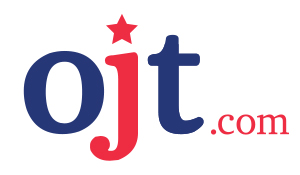The Technology Industry has Traditionally been one of the most Attractive Industries to work in.
The function of the innovation, compensation, and excitement of working for companies with the potential to change the world. Tech companies have also been disruptors in the space of employer branding too -frequently outperforming other sectors by showcasing office and culture perks the other firms may not be able to compete against.
The COVID-19 pandemic, and its global implications on workforces everywhere, is interesting to think about from a tech job market perspective. As consumers and businesses shift to an increasingly remote environment, DTC and SaaS companies already positioned with this prayer workforces have seen less disruption and have used the shifting dynamics as a chance to grow.
But behind all the glamor of working for a well-known tech company, or a lesser-known firm doing disruptive things in a fast-paced environment, is a need for firms to have solid human capital infrastructure and operations in place to facilitate the kinds of growth that tech companies are used to. And these operational roles are great opportunities for job seekers looking to transition into the tech area.
So, what does that mean from a job seeker’s perspective? Especially the job seeker looking to transition into a role in the technology industry? Also, what are the current dynamics around traditionally in-person processes such as training and professional development within an organization?
On-The-Job Training in a Remote Environment
Regardless of job function, tech companies are at the forefront of transitioning to a fully remote work environment. And one of the key implications of a transition to remote work is the idea that on-the-job training, and the best practices around training new employees, have to be transitioned into the work from homeworld. As a result, tech companies are leaning more and more on digital tools that maintain the quality of onboarding to a level that is similar to that of an in-person experience.

There are benefits, too, that have come about as a result of the transition to virtual on-the-job training. These include pacing and the level of detail that new hires can dive into because they can check on information without the pressure of somebody looking over them.
“We’re seeing our new hires showcase their problem-solving skills earlier as a result of virtual on-the-job training,” says Kristen Fowler, Practice Lead at Clarke Caniff Strategic Search – a boutique executive search firm specializing in the hospitality, services, real estate, and luxury sectors. “when we compare the experience of training virtually to in-person training, we can see that new hires are encouraged to be a little bit more curious and click around the different systems they’re learning to use. We are seeing more trial and error, and a willingness to figure out what works for them instead of being spoon-fed information, which is a good thing.”
Greater Diversity of Individuals and Perspectives in the Hiring Process
Usually, at the forefront of progressive conversations around the future of workforce dynamics, tech companies are also contributing to a trend that recruiting firms and hiring professionals are seeing when it comes to interviewing and candidate vetting in a virtual environment – that being a greater emphasis on the candidate experience and increased exposure to more stakeholders in an organization earlier in the interviewing process.
“An interesting trend we’re seeing in hiring because of work-from-home is an increased number of interviews happening with more diverse team members throughout an organization,” says Joseph Puglise, Senior Director of Executive Search and Recruiting at global executive search firm JMJ Phillip Group. “Because you’re not getting the office tour and culture, we’re seeing companies make a bigger effort around getting more people as part of the interview process.”
What this trend indicates is that tech companies are thinking more about showcasing the firm’s diversity of ideas and perspectives which in turn can help decision-making on both the candidate and hiring team’s sides. Candidates get a truer sense of the individuals in an organization, and whether they will mesh with the culture of the organization, and the hiring organization can get a sense of how the candidate will fit with the current infrastructure of the organization, just by virtue of how they interact with the various stakeholders through the interviewing process. Regarding On-the-Job Training, OJT.com offers enterprises the ability to showcase their newest OJT Opportunities from our Career Seeker Page, and in return will be able to review all candidate videos responding to their OJT Opportunity.
This ends up being a win-win for both sides and is a trend that will most likely continue even as the world settles back into a post-pandemic environment. there’s a lot of value in having more perspectives on a hiring decision, and there is also a lot of value in shortening the amount of time that a candidate takes to get a feel for an organization’s culture – something that traditionally required being on the job for a certain amount of time because only then we’re candidates able to meet enough people within an organization to make a decision.
Dennis Theodorou, Vice President
Clarke Caniff Strategic Search
As Vice President of Clarke Caniff Strategic Search, Dennis leads the firm’s cross-functional team across sales, strategy, service innovation, and client service. Dennis holds a Logistics, Materials, and Supply Chain Management degree from Michigan State University, certifications in Strategic Management and Service Design/Operations from Harvard Extension School and has completed Six Sigma Black Belt Training.


